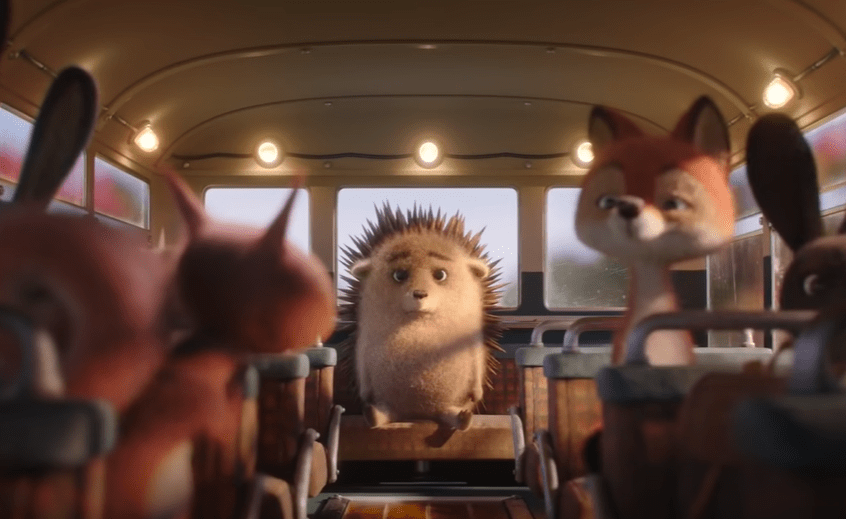Empathy in Marketing: Convert Consumers with Kindness
When you release a commercial, you’re marketing to the heart, not just the mind. To truly move consumers and open them up to your brand, you need to call upon empathy. Empathy in marketing has unimaginable power. It transfers the feelings of the protagonist to the consumer, getting them invested in the story’s trajectory. And if your brand is positioned as that protagonist, consumers will be invested in it, too.
Convert them with kindness
Convert consumers with kindness, to be exact. Most People relish seeing humans being nice humans or sweet moments of the animal variety, like dogs befriending ducks. It’s why uplifting Instagram accounts like Good News Dog have 1M+ followers.
In dark moments, people look for pockets of light. Empathy in marketing depends on that desire and capacity for goodness. However, consumers’ empathy has to be earned.
You can’t expect people to empathize with any old character. You need to put in the work to craft a story for which consumers can’t help but fall.
Kindness is fodder for empathy-based marketing. When people are kind or witness acts of kindness, they experience feelings of pleasure and satisfaction due to the release of positive neurotransmitters like dopamine, serotonin, and oxytocin in their brains.
Oxytocin heightens one’s sense of empathy. Once it’s released with the help of kindness, consumers will be more deeply connected to your story and its protagonist, leading them to make brand-friendly decisions after the commercial closes.
Prime consumers’ empathy with a sad scene
Before you crank up the kindness to 11, give consumers something to cry about (or at least feel mildly sad about).
Start your story on a low note, introducing a problem or barrier that needs to be overcome.
In Erste’s darling 2018 Christmas commercial, What would Christmas be without love?, we meet a sweet hedgehog, seemingly starting at a new school. Its problem? Loneliness. The hedgehog is quickly ostracized by the other animals because of its prickly, hazardous exterior.

The song used in the commercial fits beautifully. The mellifluous voice begins: “So this life has given everyone a present, beautiful, shiny, and new…everyone but you.”
Hearts would break just reading the lyrics, let alone hearing it played while a hedgehog navigates the trials and tribulations of fitting in with its peers.
The animation itself is incredibly touching, the hedgehog’s bright-eyed hope at being included and heavy disappointment when its spikes get in the way is palpable. Anyone with a beating heart would empathize with the hedgehog, even if the situation itself isn’t relatable.
Our empathy is primed. There's no turning back. We’re in it for the long haul, waiting to see what fate has in store for our dear hedgehog.
Generating mirror experiences with empathy-based marketing
As Robert McKee and Thomas Gerace put it in their storytelling marketing book Storynomics, “Sympathy is optional, empathy essential.” (Storynomics, page 64) It’s easy to feel sympathy for others, but sympathy is not what pulls us into mirror experiences, empathy is.
A mirror experience occurs when we empathize with a character so much so that we feel tethered to their emotional journey. We cry when they cry and laugh when they laugh. We root for their success as if it truly were our own.
If your brand is the protagonist of your story, you need consumers to root for it:
“Ideally, the storyteller places this center of good within the protagonist so that a positive human quality emanates from within the core character and captures the audience’s personal involvement." (Storynomics, page 65)
This mirror-experience-level of empathy can extend to non-human creatures and objects, too, as proven by Erste’s commercial.

Erste employs the literary device anthropomorphism to improve marketing performance by bestowing human qualities upon its animal characters.
Its use of anthropomorphism makes consumers more susceptible to the pain faced by the hedgehog, eliciting an empathetic response, thereby increasing the chance of a mirror experience.
In empathy marketing, end on a high note
A story should not begin and end in the same place, unless that structure delivers a powerful message about the cyclical struggles of the protagonist.
In most cases, a story ends with a natural resolution. The problem set up at the beginning of the story is solved. The protagonist finds some semblance of happiness or peace.
Erste’s Christmas commercial ends with a grand act of kindness. After a full season of being alone, the hedgehog is gifted with packing peanuts from his classmates to cover his spikes, all so that he can play with them. They share in a group hug. It's worth shedding a few tears over.
This commercial could have been a villain origin story. It felt redolent of the Grinch at first, but instead, we witnessed the magic of kindness, leaving us with full hearts and a favorable opinion of Erste.
Take notes. You want to leave a good taste in consumers' mouths after they finish watching your commercial. You want them to be so moved by your story that they share it with others and look into your brand as a solution to a problem they face.
The next time you're brainstorming commercial ideas, lead with kindness to unlock consumers' empathy. Their loyalty will follow.
Create empathy-based, personalized, digital stories with STORYSOFT. Learn more.
Book a Demo
See how to bring personalized digital experiences to life for your brand
During the call you will:
- Hear how it works
- See example digital Stories
- Walk through the analytics
- Get your questions answered